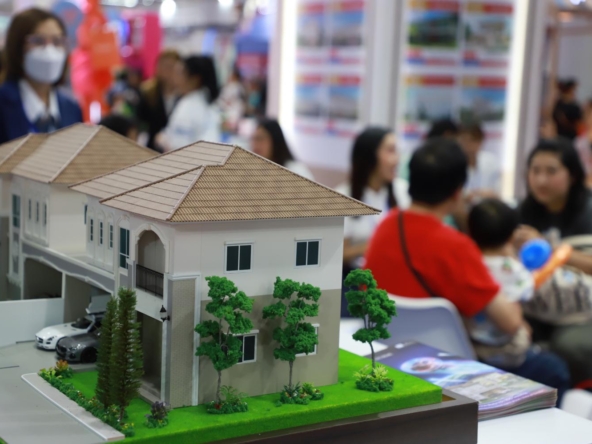Rental rates for factory and warehouse space are expected to continue rising, but will remain below pre-pandemic levels, unlike industrial land sales, which have recorded strong demand, primarily from Chinese investors who prefer buying over renting.
Sayarm Tongkrabin, head of industrial estate developer ESR Thailand, said while the overall industrial property market was robust last year, sales of industrial land sales represented the most active segment.
“The majority of investors in the industrial property sector were from China and Taiwan. They prefer buying land rather than renting, which resulted in industrial estate land selling out in the past year,” he said.
The Board of Investment (BoI) last week reported a 35% year-on-year surge in investment applications in Thailand, reaching 1.13 trillion baht, the highest level since 2014.
Sorapong Jakteerungkul, an analyst at Kasikorn Securities Plc, said the number of applications increased 40% to more than 3,100, the most recorded in the history of the BoI.
Roughly 800 billion baht of the total value came from foreign direct investment, rising 50%, led by Singapore, China, Hong Kong, Taiwan and Japan.
“Interestingly, many of the applications listed under Singapore were actually Chinese firms operating from Singapore and applying for BoI incentives as Singaporean entities,” said Mr Sorapong.
“The main beneficiaries of this investment surge will be industrial estate developers through land sales and factory rentals.”
Mr Sayarm said while rental factories and warehouses also benefit from this trend, the impact is less significant compared to industrial land sales.
“This is because the oversupply of rental spaces since before Covid-19 was only depleted last year. It will take time to develop new supply to meet the growing demand,” Mr Sayarm said.
Surachet Kongcheep, head of research and consultancy at property consultant Cushman & Wakefield Thailand, said that demand for ready-built factories (RBFs), built-to-suit (BTS) facilities, and warehouses is expected to rise over the next few years.
“New supply of RBFs may decrease, with a shift towards BTS facilities,” he said. “This is because certain industries, particularly new ones, have specific requirements and building designs that differ from the standard RBF format.”
He said small-sized developers are becoming more prevalent in the market, driven by demand from Chinese investors.
“Many Chinese investors are forming groups and collaborating with small-sized developers — or companies owned or partially owned by Chinese stakeholders — to acquire land and develop projects tailored to their needs within industrial zones,” he said.
According to Cushman & Wakefield, rental rates for RBFs began recovering in the first quarter of 2022. The trend remains upward but has not yet reached the levels prior to the pandemic.
“This is due to high market competition, limited recovery in demand, and an increase in the number of new players entering the market compared to 2019,” said Mr Surachet.
Phongphan Phloiphet, director of logistics and industrial at Cushman & Wakefield Thailand, said Samut Prakan faces challenges stemming from high density, driven by both long-established industrial activities and new developments in recent years.
“Residential projects have expanded into the area, while purple zones designated for logistics and industrial businesses remain limited and have not grown significantly in line with demand,” he said.
AUTHOR:
All copyrights for this article, including images, are reserved to the original source and/or creator(s).


